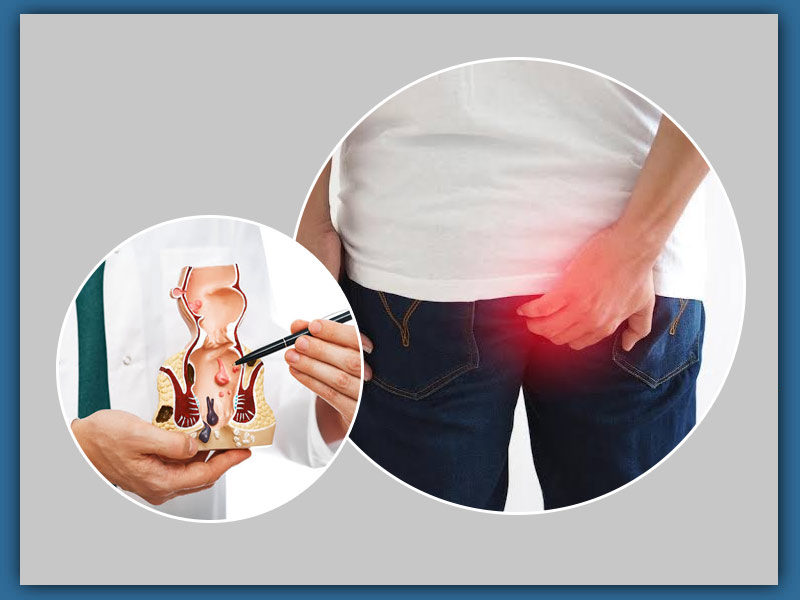
Around half of the Indian population has hemorrhoids, and a lot of them also have anal tear or fissures. But, because both piles and fissures have similar symptoms, many people are not able to differentiate between the two. The signs of piles or fissures include an itchy and irritated anal canal, difficulty in passing stools, bloody stools, and discomfort in sitting for a long period of time. Onlymyhealth editorial team spoke to Dr. Lovkesh Anand, HOD - Hepatology | Consultant - Gastroenterology, HCMCT Manipal Hospital, Dwarka, to know everything about the difference between piles and fissures.
Table of Content:-
Difference between piles and fissure
Most of the people are not able to identify the cause of pain or discomfort in the anal area. They are unable to differentiate between piles and fissures. Both the health conditions have comparable symptoms. They are comparitively common and in most cases, any bleeding is not a reason for warning or alarm.

However, any kind of bleeding from the anus should always be checked immediately as it can be a symptom of a more severe condition. Generally, the doctor can diagnose the condition by visual inspection of the anus or by a simple exam using the tip of the finger. A colonoscopy or sigmoidoscopy is also advised to evaluate and distinguish between the two.
When a patient experiences pain or discomfort near the anal area, or sees blood in stool or toilet paper, he/she suspects piles. Basically, piles are caused by enlarged blood vessels or tissues in the anal area and anal canal because of chronic constipation and excessive pressure caused by long sitting hours. A fissure is caused due to a tear in the skin around the anus or anal entrance.
Also read: Homeopathic treatment for piles
Symptoms of piles and fissures
Symptoms of piles are itching or irritation in the anal area, slimy mucus in your underwear or on toilet paper after wiping the bottom, pain and discomfort, swelling around your anus or bleeding. On the other hand, fissure can lead to a sharp pain that begins with the passage of stool. This pain can last from a few minutes to a several hours. As a result, most patients might try to control their bowel movements to avoid the pain. In the early stages of the fissure, bleeding is rarely seen. A small lump or skin tag on the skin is usually present near the anal fissure, especially in chronic cases.
Causes of piles and fissures
Straining during bowel movements, sitting for longer periods of time on the toilet, chronic diarrhea or constipation, chronic coughing, regular heavy lifting, obesity and pregnancy can put a lot of pressure on the veins in the anal area, leading to piles. The most common causes of anal fissure are passing large or hard stools, constipation and straining during bowel movements, chronic diarrhea, anal intercourse and childbirth. Other causes of anal fissures are Crohn's disease or another inflammatory bowel condition, anal cancer, HIV, Tuberculosis and Syphilis.
Which is worse, hemorrhoids or fissures?

In most cases, piles are not that severe. They generally get fine within a few days. In case they don’t, piles can be easily treated using over the counter medications, home remedies and in some patients minimally invasive procedures. While fissures can cause a lot of pain. Fissures might not heal, may recur and can spread to the surrounding muscles making it more difficult to cure. Therefore, in most cases, medication and surgical procedures such as lateral sphincterotomy might be required.
Treatment for piles
Initial phases of piles can be treated with medication, healthy and high-fiber diet, and plenty of water during the day. For pain relief, one can use ice packs and cold water. For persistent bleeding or painful hemorrhoids, your doctor might advice one or the other minimally invasive procedures such as band ligation, injection sclerotherapy or coagulation techniques available. These treatments can be done in your doctor's office or other outpatient setting and do not mostly require anesthesia. Only a small group of patients with hemorrhoids need surgery such as Hemorrhoid removal (hemorrhoidectomy), or Hemorrhoid stapling.
Also read: Anal Fissure: Symptoms, Causes And Treatment
Fissures treatment
Fissure treatment can help in fast healing by relaxing the anal sphincter through the passage of soft stool. Most anal fissures get better with simple treatments, including more fiber intake or sitz baths. Some patients with anal fissures might require medication or, occasionally, surgery. An anal fissure that is not healing in eight weeks is considered chronic and requires further treatment.
A patient with acute fissure is advised to go through surgery to treat it. Surgical options such as Botulinum toxin (Botox) injection into the anal sphincter or surgical division of an inner part of the anal sphincter (lateral internal sphincterotomy). Proper healing after both medical and surgical treatments can take around 6-10 weeks. Even when the pain and bleeding is less, it is important to maintain good bowel habits and take a high-fiber diet.
Ways to prevent piles and fissures

The main key for prevention is healthy diet and habits to produce softer stools, therefore, reducing the need to strain. Here are a few useful ways to prevent piles and fissures:
- Take a high fibre diet (fruits,
- vegetables, legumes, and whole grains)
- Drink plenty of water (8 to 10 glasses of
- water daily) regularly
- Don’t hurry or strain to push bowel movements, and avoid sitting in the toilet for a long time
- Avoid harsh wiping after bowel movements (to decrease irritation)
- Exercise regularly
All image credits: Freepik
Also watch this video
How we keep this article up to date:
We work with experts and keep a close eye on the latest in health and wellness. Whenever there is a new research or helpful information, we update our articles with accurate and useful advice.
Current Version